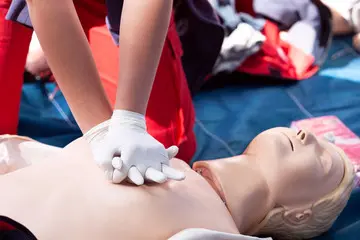
Events
City & Guilds Confined Space Training: High Risk
Member price – £460.00 + VAT
Non-member price – £495.00 + VAT
Duration –2 Days
What does the Confined Space: High Risk Training Cover?
- Legislation and regulations
- COSHH
- Confined spaces definition
- Risk assessment and workplace safety within a high risk environment
- Procedures for a high risk rescue and emergency planning
- Control measures, method statement and permits
- Personal protective equipment (PPE)
- Atmospheric hazard monitoring
- Gas monitor requirements (such as checking for a safe oxygen level with an air monitor log)
- Personal hygiene and first aid requirements
- Top person duties
- Harness inspecting and wearing
- Breathing escape set use
- Team practical using specialist equipment
- Pre-use inspection and wearing Self-Contained Breathing Apparatus (SCBA)
- How to take the readings correctly on BA (Breathing Air Cylinder)
Course Content
Low-Medium Risk Content
- Identifying a confined space
- Recognising foreseeable risks
- Understanding the difference between an enclosed space and confined space
- Confined space regulations and applying these to own work scenarios
- Water UK Occasional Guidance notes that many companies follow within the industry
- Identifying the difference between the national classifications 1, 2, 3 & 4
- Confined space roles and responsibilities
- Health & Safety at Work Act 1974
- Completing risk assessments and permits to work
- Health and hygiene
- Selecting equipment for appropriate confined space entry by identifying the level of risk
- Completing risk assessments and permits to work
- Health and hygiene
- Selecting equipment for appropriate confined space entry by identifying the level of risk
High Risk Content
- Identifying the differences between medium and high risk
- Recognising the foreseeable risks and added dangers within a high risk confined space
- Products and equipment that could change now the environment is deemed high risk
- Why some products could create an additional hazard due to the change in environment
- Applying the regulations to a high risk confined space
- Communication requirements and selecting correct communication equipment
- Understanding both the benefits and additional hazards of ventilation
- Selecting a suitable worker
- O.S.H.H.
- Identifying different gases
- Removing contamination safely and how not to take the contamination home
- Rescue requirement for high risk confined spaces
- Additional top person duties (e.g. control tally board)
- Selecting the correct breathing apparatus depending on the job
- Build and inspect specialist equipment, such as SCBA
- Carry out a high/low pressure check to ensure kit is not subject to risks
- Donning and doffing procedure
- Team practical acting as top team and entrants, wearing SCBA
- Inspecting equipment for damage or contamination after use
- Close the confined space job by ensuring the area is safe before leaving sit
PPE Required to Attend the Training
- Safety boots
- Hard hat
- Gloves
- Overalls or work clothes
- Knee pads (optional)
Important notice: Delegates must be clean shaven for day 2 of the course when using SCBA. Delegates who are not clean shaven will not be able to complete the course.
Book this training course
Member price – £460.00 + VAT
Non-member price – £495.00 + VAT
Duration –2 Days
What does the Confined Space: High Risk Training Cover?
- Legislation and regulations
- COSHH
- Confined spaces definition
- Risk assessment and workplace safety within a high risk environment
- Procedures for a high risk rescue and emergency planning
- Control measures, method statement and permits
- Personal protective equipment (PPE)
- Atmospheric hazard monitoring
- Gas monitor requirements (such as checking for a safe oxygen level with an air monitor log)
- Personal hygiene and first aid requirements
- Top person duties
- Harness inspecting and wearing
- Breathing escape set use
- Team practical using specialist equipment
- Pre-use inspection and wearing Self-Contained Breathing Apparatus (SCBA)
- How to take the readings correctly on BA (Breathing Air Cylinder)
Course Content
Low-Medium Risk Content
- Identifying a confined space
- Recognising foreseeable risks
- Understanding the difference between an enclosed space and confined space
- Confined space regulations and applying these to own work scenarios
- Water UK Occasional Guidance notes that many companies follow within the industry
- Identifying the difference between the national classifications 1, 2, 3 & 4
- Confined space roles and responsibilities
- Health & Safety at Work Act 1974
- Completing risk assessments and permits to work
- Health and hygiene
- Selecting equipment for appropriate confined space entry by identifying the level of risk
- Completing risk assessments and permits to work
- Health and hygiene
- Selecting equipment for appropriate confined space entry by identifying the level of risk
High Risk Content
- Identifying the differences between medium and high risk
- Recognising the foreseeable risks and added dangers within a high risk confined space
- Products and equipment that could change now the environment is deemed high risk
- Why some products could create an additional hazard due to the change in environment
- Applying the regulations to a high risk confined space
- Communication requirements and selecting correct communication equipment
- Understanding both the benefits and additional hazards of ventilation
- Selecting a suitable worker
- O.S.H.H.
- Identifying different gases
- Removing contamination safely and how not to take the contamination home
- Rescue requirement for high risk confined spaces
- Additional top person duties (e.g. control tally board)
- Selecting the correct breathing apparatus depending on the job
- Build and inspect specialist equipment, such as SCBA
- Carry out a high/low pressure check to ensure kit is not subject to risks
- Donning and doffing procedure
- Team practical acting as top team and entrants, wearing SCBA
- Inspecting equipment for damage or contamination after use
- Close the confined space job by ensuring the area is safe before leaving sit
PPE Required to Attend the Training
- Safety boots
- Hard hat
- Gloves
- Overalls or work clothes
- Knee pads (optional)
Important notice: Delegates must be clean shaven for day 2 of the course when using SCBA. Delegates who are not clean shaven will not be able to complete the course.



